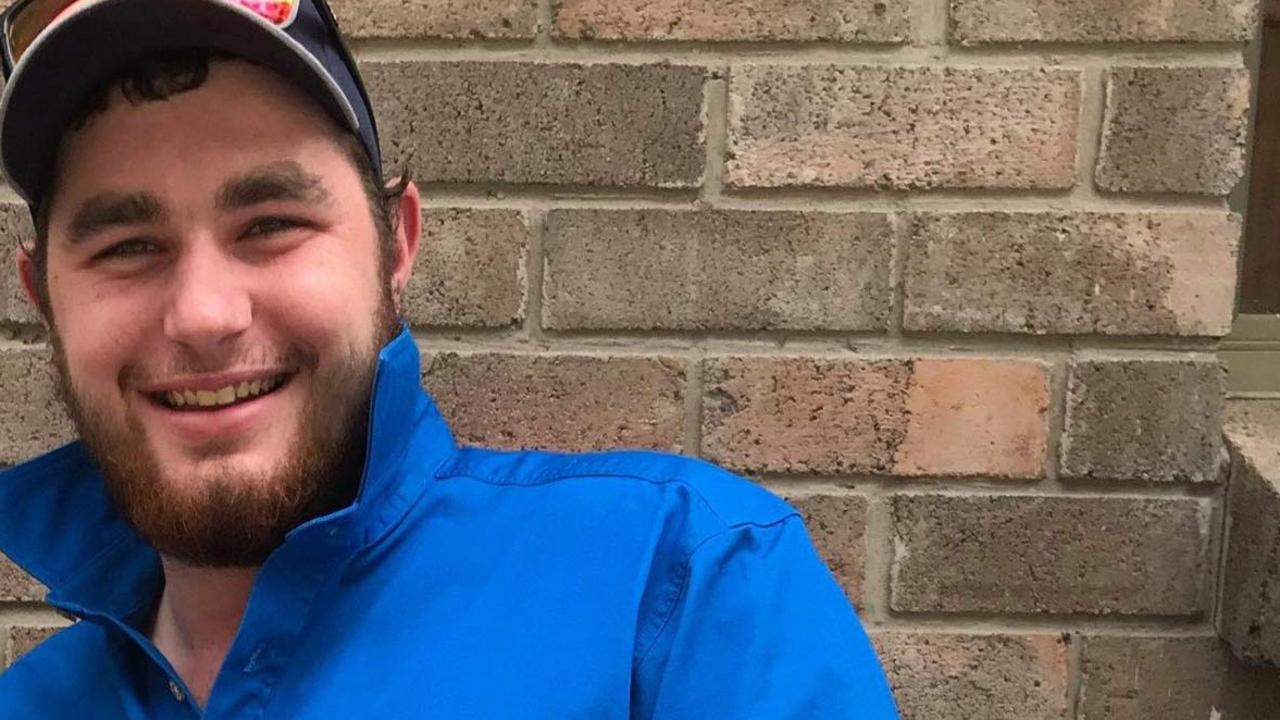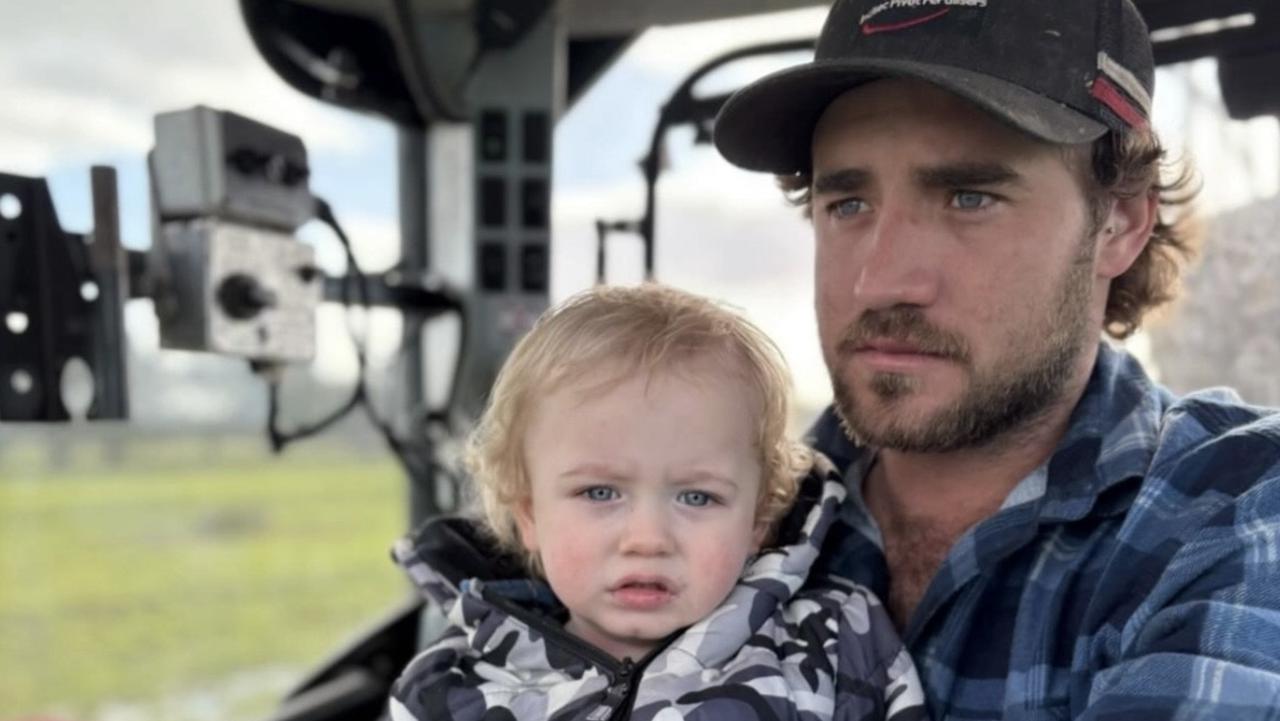Clownfish the Tassie devil released following long injury rehab at Bonorong Wildlife Sanctuary
A spunky Tasmanian devil with a funny name has defied all odds to recovered from a “really gnarly” leg injury, thanks to the tireless work of the Bonorong Wildlife Sanctuary.
Tasmania
Don't miss out on the headlines from Tasmania. Followed categories will be added to My News.
Against all odds, a Tasmanian devil called Clownfish has been released back into the wild after sustaining a “really gnarly” injury which her rescuers thought would require her leg to be amputated.
Following a lengthy rehab process at the Bonorong Wildlife Sanctuary at Brighton, Clownfish was released about a month ago.
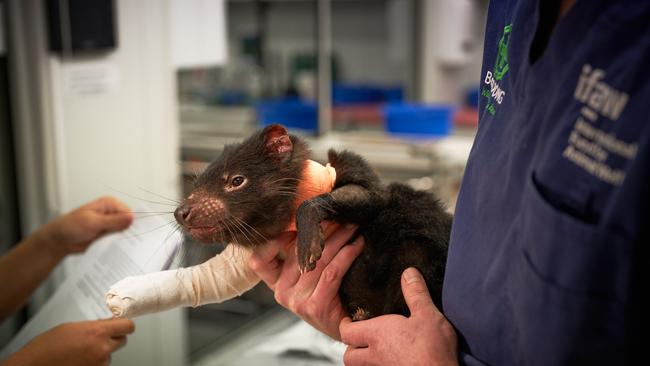
Described as a “very active little thing”, “quite confident”, and a “real fighter”, the female devil, believed to be about two years’ old, was found on Maria Island with a severe leg injury in July this year.
Bonorong director Greg Irons said the sanctuary had received a call from the Save the Tassie Devil program after Clownfish was discovered.
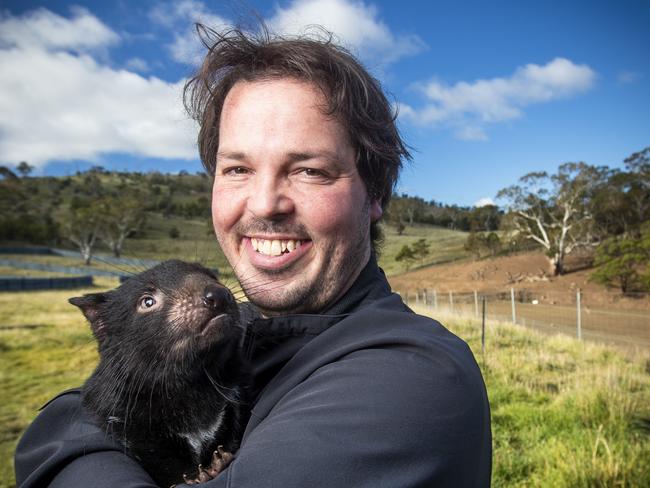
“It had a really, really gnarly leg injury but we don’t actually know what caused it,” he said.
Maria Island is home to an insurance population of devils – part of a program to isolate the animal from the Tasmanian mainland and protect it from the deadly devil facial tumour disease.
Mr Irons said Clownfish’s wound was already “a number of days old” when she was found.
“All the skin had gone necrotic and started dying off,” he said. “So you sort of can’t seal it. So there’s every chance for an infection … (where) you would actually have to remove the leg with the extent of those injuries.”
The dedicated team at Bonorong began by cleaning Clownfish’s wound and removing all the dead skin. They then bandaged it and sought to prevent the rambunctious devil from ripping it off.
Mr Irons said the rehab process then took about two-to-three months.
The Bonorong director lamented that the number of call-outs the sanctuary received continued to increase every year – even in spite of the Covid pandemic.
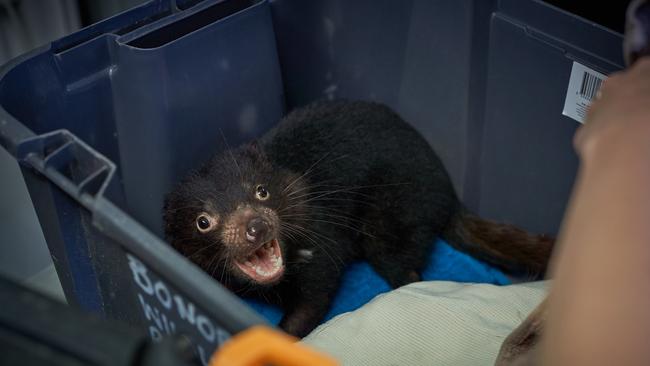
“In a way, we were sort of hoping that the one positive we might see with Covid was less animals coming in,” Mr Irons said. “Because there’s always this thing that everyone says: ‘It’s the tourists that hit all the animals on the road.’ Which is just not the case.”
“This year, we haven’t had tourists here and there’s been as many, if not more (call-outs).”
Mr Irons said Bonorong had assisted more than 14,000 animals in 2021, and that the total number increased year on year by between 500-1000 animals.
“If you can imagine the resources (needed) to look after 500-1000 (additional animals every year), it’s pretty scary stuff,” he said “I would love to see it taper off at some point. But that needs a real statewide effort and everyone really doing their bit.”
If you see a wild animal in need of assistance, contact Bonorong on 0447 264 625.
Originally published as Clownfish the Tassie devil released following long injury rehab at Bonorong Wildlife Sanctuary




